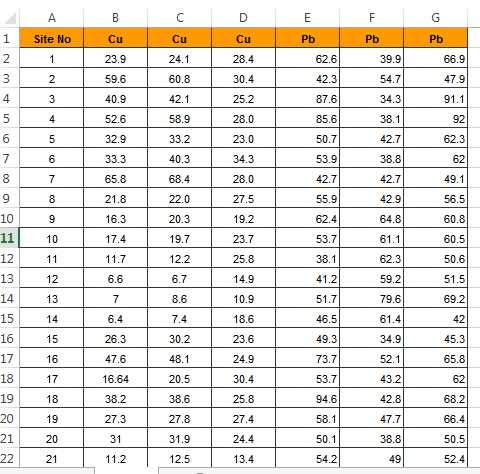Copper Lead Aberdeen Harbour Sediments
Here is a preview of the paper on Copper Lead Aberdeen Harbour Sediments.
Copper and Lead Levels in Aberdeen Harbour
1.0 Introduction
Anthropogenic activities are recognized as a significant contributor to the build-up of heavy metals, such as lead and copper in urban areas and marine settings, posing health risks to people’s lives and the lives or marine organisms (Yan et al., 2018; Briffa et al., 2020). Exposure of humans or marine organisms to these pollutants can result illness, poor health, or even death (Briffa et al., 2020). Lead, a well-known poison for centuries, is a subject of global public health regulations and is linked to miscarriages, brain damage, kidney damage, cancers, and even death in humans (Tchounwou, et al. 2012; WHO, 2024). Although naturally present in soils at low concentrations, studies indicate a gradual increase in environmental lead concentrations due to human activities (WHO, 2024). Copper, essential for enzymatic activity at low concentrations, acts as an enzyme inhibitor at higher levels, causing diarrhoea, vomiting, and liver disease in humans (Tchounwou, et al. 2012; Ashish et al., 2013).
Harbours, due to shipping activities, often experience severe marine pollution (Onwuegbuchunam et al., 2017; Zhang, 2020; Shahzad, 2023), leading to a rapid decline in water and sediment quality, impacting fish and marine life significantly. Unlike some pollutants, heavy metals cannot undergo biodegradation and may accumulate in sediments to toxic levels over time (Tchounwou, et al. 2012). According to the Marine Management Organisation (2015), marine sediment concentrations below 50mg/kg (dry weight) for lead and below 40mg/kg for copper fall under Action Level 1 (AL1), indicating safe levels (Appendix 1).
Situated in Aberdeen City, Aberdeen Harbour, is recognized as one of the oldest and busiest ports in the United Kingdom (Ship Technology, 2018). Handling approximately 8,000 vessels annually, the harbour contributes over £1.5 billion to the national economy by managing nearly five million tonnes of cargo (Ship Technology, 2018). The cargo, including industrial chemicals, pesticides, oil, and liquefied gas, poses a potential risk of pollution. Additionally, other sources of heavy metals entering the harbour include construction, domestic, industrial, and agricultural activities, as well as chemicals and wastes. Continue Reading (Alternative 2) …
Here are some words that can be used to describe the paper:
Aberdeen harbour baseline study example
Aberdeen harbour sediments study
Aberdeen Harbour Baseline Survey
Aberdeen Harbour Baseline Survey for Environmental Status
Copper and Lead Levels in Aberdeen Harbour Sediments
Copper Lead Aberdeen Harbour Sediments
Sample data
